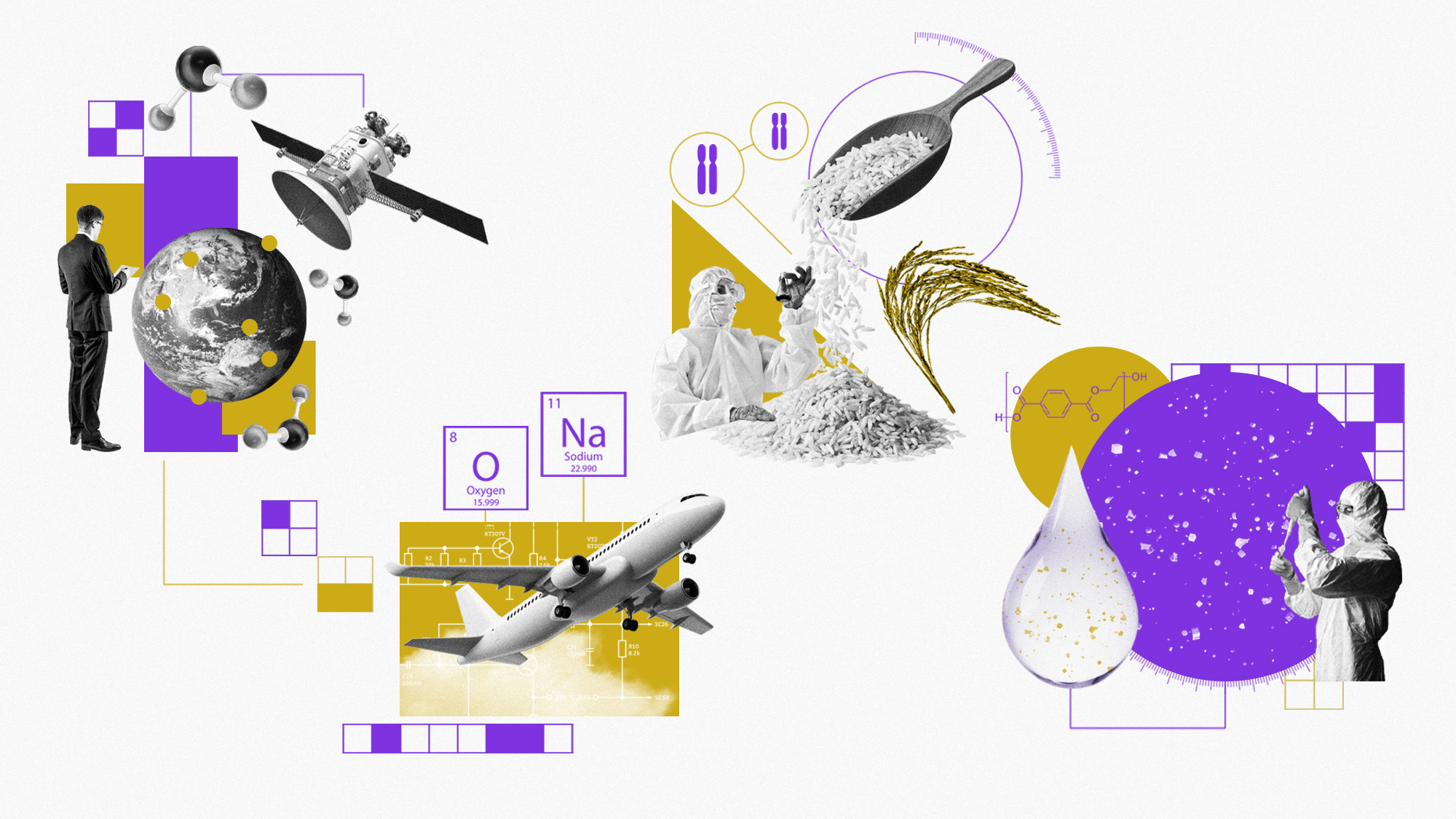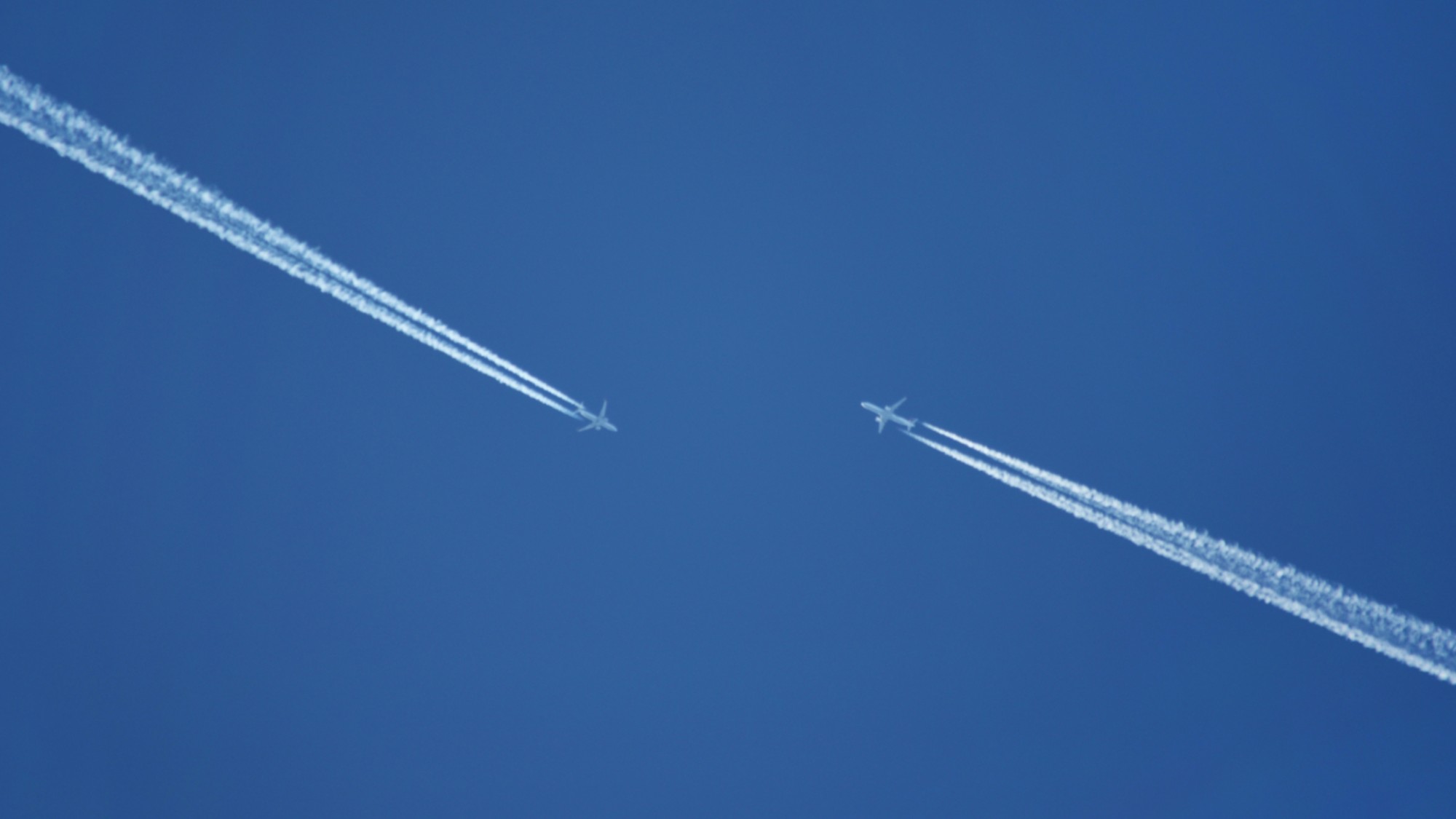America's natural gas boom
The fossil fuel has replaced coal as the top source of electricity in the U.S. Is that good for the climate?

The fossil fuel has replaced coal as the top source of electricity in the U.S. Is that good for the climate? Here's everything you need to know:
Is natural gas cleaner than coal?
It’s long been considered the more climate friendly of the two fossil fuels. That’s largely because gas-burning power plants emit about half as much carbon dioxide per unit of energy compared with coal-fired plants. Natural gas, now the dominant fuel in the U.S. electricity sector, has other advantages over coal. It generates fewer toxic airborne pollutants when burned. Extracting the fuel through hydraulic fracturing or "fracking" — using high-pressurized water, sand and chemicals to fracture underground rock formations, releasing gas and oil — also has a less destructive impact on land than open-pit coal mines. Those factors have led energy companies, lawmakers and even some environmentalists to call natural gas a reliable "bridge fuel" that can reduce emissions amid the transition to renewables. And since 2005, planet-warming carbon emissions from U.S. power plants have shrunk by some 40% as hundreds of coal-fired power plants have been retired and many replaced with gas plants. But a growing body of research is now casting doubt on natural gas as a climate solution. The fuel is "a bridge to nowhere," said Leah Stokes, an expert on environmental politics at the University of California, Santa Barbara.
What’s the problem with natural gas?
When the fuel’s entire ground-to-combustion life cycle is considered, natural gas is just as harmful to the climate as coal, researchers argue. Natural gas is almost entirely made up of methane, a potent greenhouse gas that’s nearly 90 times more powerful at trapping heat in the atmosphere in the short term than carbon dioxide. And natural gas production is notoriously leaky. The gas is sometimes released at fracking sites for safety purposes, but it also escapes from wells and processing plants and from pipelines that transport it to power plants and homes. A recent study led by researchers at the Rocky Mountain Institute in Colorado found it takes only 0.2% of gas to leak from the country’s gas production and supply system for the fuel to be as big a driver of climate change as coal. Aerial surveys of U.S. oil and gas production sites, the researchers note, have found leak rates ranging from 0.65% to 66.2%. Liquefied natural gas (LNG) — the gas takes up 600 times less space in its liquid form and so is easier to export — could have an even bigger climate impact.
The Week
Escape your echo chamber. Get the facts behind the news, plus analysis from multiple perspectives.

Sign up for The Week's Free Newsletters
From our morning news briefing to a weekly Good News Newsletter, get the best of The Week delivered directly to your inbox.
From our morning news briefing to a weekly Good News Newsletter, get the best of The Week delivered directly to your inbox.
Why is LNG considered such a risk?
Supercooling the gas to minus 259 degrees Fahrenheit — the temperature at which
it condenses into a liquid — is an energy intensive process. LNG is then loaded onto specialized carrier ships, which set sail for Europe and Asia. During long voyages, insulated storage tanks inevitably absorb heat from the outside air, causing some LNG to re-gasify. The so-called boil-off gas must then be released to maintain the tanks’ pressure; the most modern LNG ships use that boiled-off methane for fuel. Robert Warren Howarth, a methane expert at Cornell University, estimates that in the best-case scenario, the life-cycle greenhouse-gas emissions from LNG are 24% higher than those from digging up and burning coal. In the worst case, emissions are 274% higher. "Ending the use of LNG must be a priority," said Howarth. But most energy analysts believe the U.S. LNG industry is just at the start of a decades-long boom.
What’s driving that growth?
Energy insecurity. Following Russia’s 2022 invasion of Ukraine, the European Union went from importing more than 50% of its gas from Russia to below 20%. The EU offset that loss by ramping up imports of LNG, helping to transform
the U.S. — which exported almost no LNG a decade ago — into the world’s largest supplier of the fuel. More than two dozen new or expanded export terminals are now being constructed or are under consideration in the U.S. and exports of LNG are expected to double over the next four years. Activists who oppose this expansion are effectively "denying energy security to millions of people," said a spokesperson for Venture Global, which is seeking to build a $10 billion LNG export facility in southwestern Louisiana.
Does the Biden administration support such projects?
It has approved natural gas projects at roughly the same rate as the climate-indifferent Trump administration, including plans this year for a $39 billion gas pipeline and LNG plant in Alaska. The administration is also trying to curb the industry’s planet-warming emissions. The Inflation Reduction Act, signed by President Biden last year, allows fines to be levied against companies that emit large quantities of the gas. And under new Environmental Protection Agency rules announced earlier this month, oil and gas firms will be required to monitor and fix methane leaks. Third parties, including environmental groups, will also be allowed to detect and report large methane releases.
Will that make a difference?
The EPA estimates that its new rules, likely to be challenged by Republican-led states, could eliminate 58 million tons of methane emissions by 2038 — equivalent to the annual carbon emissions of all U.S. coal-fired plants. But technology that will allow for precise methane measurements is still being developed. The planes, drones, ground sensors and satellites currently in use provide intermittent and limited data, which could make it easier for emitters to file legal challenges against any penalties. Still, "the problems are way smaller than the opportunity to finally, finally deal directly with a greenhouse gas," said Deborah Gordon of the Rocky Mountain Institute, "especially a very powerful greenhouse gas that has never been on the agenda."
A free daily email with the biggest news stories of the day – and the best features from TheWeek.com
Shrewd branding for natural gas
What so “natural” about natural gas? The fossil fuel’s name has its roots in the 1820s, when gunsmith William Hart decided to tap the flammable gas that bubbled up from a creek near his home in Fredonia, New York. That gas, which he sold for lighting, was nicknamed "nature’s gas" to distinguish it from coal gas, which is manufactured. That nickname transformed into natural gas, a moniker that energy companies have used in recent decades to help position gas as a green alternative to coal. Much as consumers are more likely to have a positive opinion of foods and cosmetics branded natural and clean, a 2021 poll found that 77% of voters had a favorable view of natural gas but only 29% felt the same about methane. To fight this clean image, some environmentalists now refer to natural gas as methane gas, fossil gas, or fracked gas. But those terms could backfire: Another 2021 poll found Republican voters viewed natural gas more favorably when it was called fossil gas or fracked gas.
This article was first published in the latest issue of The Week magazine. If you want to read more like it, you can try six risk-free issues of the magazine here.
-
 How to financially prepare for divorce
How to financially prepare for divorceThe Explainer Facing ‘irreconcilable differences’ does not have to be financially devastating
-
 Why it’s important to shop around for a mortgage and what to look for
Why it’s important to shop around for a mortgage and what to look forThe Explainer You can save big by comparing different mortgage offers
-
 4 ways to save on rising health care costs
4 ways to save on rising health care costsThe Explainer Health care expenses are part of an overall increase in the cost of living for Americans
-
 Environment breakthroughs of 2025
Environment breakthroughs of 2025In Depth Progress was made this year on carbon dioxide tracking, food waste upcycling, sodium batteries, microplastic monitoring and green concrete
-
 Crest falling: Mount Rainier and 4 other mountains are losing height
Crest falling: Mount Rainier and 4 other mountains are losing heightUnder the radar Its peak elevation is approximately 20 feet lower than it once was
-
 Pros and cons of geothermal energy
Pros and cons of geothermal energyPros and Cons Renewable source is environmentally friendly but it is location-specific
-
 Death toll from Southeast Asia storms tops 1,000
Death toll from Southeast Asia storms tops 1,000speed read Catastrophic floods and landslides have struck Sri Lanka, Indonesia, Thailand and Malaysia
-
 Can for-profit geoengineering put a pause on climate change?
Can for-profit geoengineering put a pause on climate change?In the Spotlight Stardust Solutions wants to dim the sun. Scientists are worried.
-
 How will climate change affect the UK?
How will climate change affect the UK?The Explainer Met Office projections show the UK getting substantially warmer and wetter – with more extreme weather events
-
 Can the UK do more on climate change?
Can the UK do more on climate change?Today's Big Question Labour has shown leadership in the face of fraying international consensus, but must show the public their green mission is ‘a net benefit, not a net cost’
-
 Did Cop30 fulfil its promise to Indigenous Brazilians?
Did Cop30 fulfil its promise to Indigenous Brazilians?Today’s Big Question Brazilian president approves 10 new protected territories, following ‘unprecedented’ Indigenous presence at conference, both as delegates and protesters